Horses are honest. Let that statement sink in for a bit as you try to understand the meaning behind these three simple, yet complex words. So what does this have to do with you, and more importantly your four-legged friend? Every day, as Equestrians, we groom, we ride, we train and so forth all in the name of building a relationship with a creature that has the physical capacity to place us in the hospital at any given time. In other words, a relationship with such an elevated risk factor is one that should be built on mutual communication. But how do we do this when the other individual in the relationship speaks an entirely different language than our own?
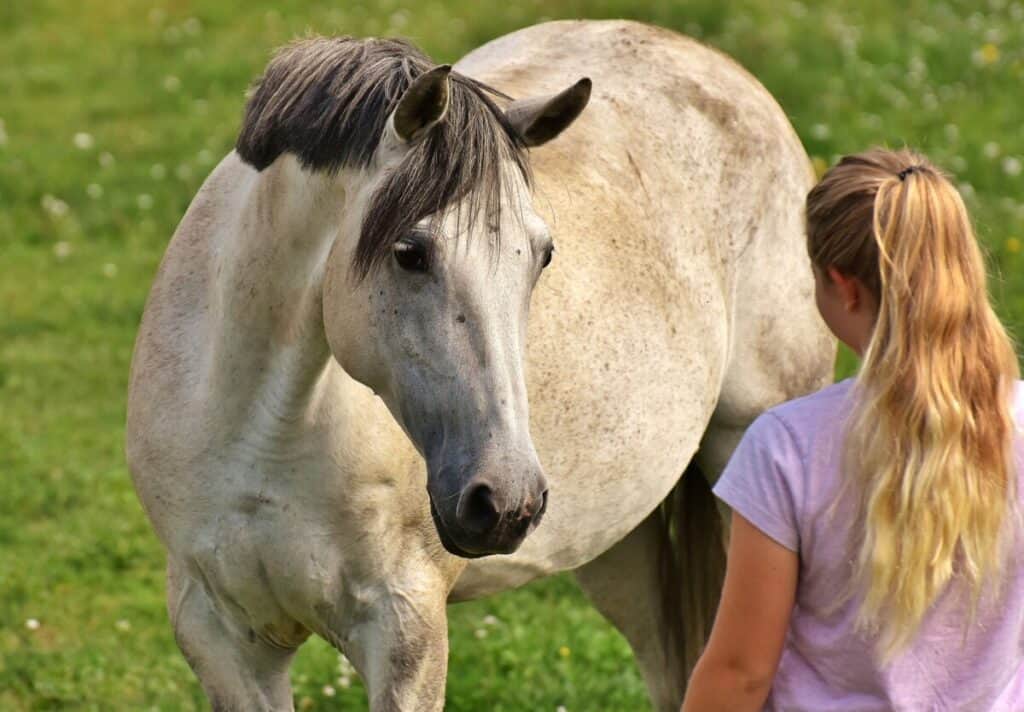
The Horse and Body Language in the Herd
There is more than meets the eye when it comes to our comprehension of the equine language. Of course our horses verbalize the occasional whinny or neigh, but the way the modern equestrian truly understands the horse is through body language. This is where the statement; “Horses are honest”, comes into play.
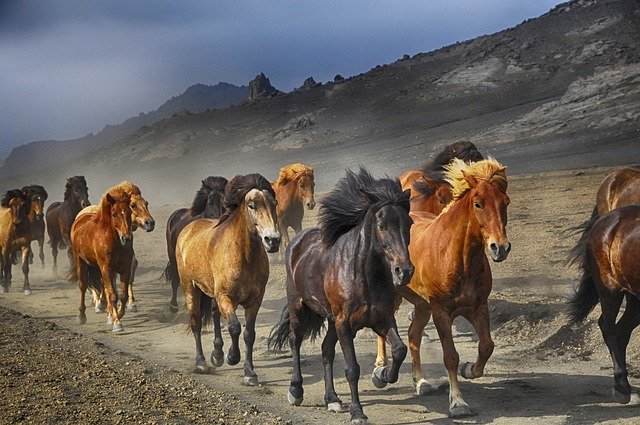
Horses are creatures of prey, meaning in the herd, they need the correct information in a timely and discrete fashion in order to safely get out of harm’s way. When we think about horses in the wild, they need to be able to communicate effectively with the herd in a predatory situation without drawing too much attention to the already pressing danger.
Another way to think about it is this; horses cannot lie, simply because they have no need to. This is how the species has evolutionarily evolved, meaning the use of body language as a method of communication is what they are most fluent in. Different body parts are assigned to different linguistic meanings on the basis of how they move or change that specific part. The trick now, as equestrians, is learning to understand what our horses have to say by better familiarizing ourselves with their body signals.
The best way to begin this process is by observing our horses in their natural herd life, where they utilize body language daily. As we piece together which body actions mean which emotions, we can start to build significantly better communication bridges between the horse and human. Once a solid form of communication is established, the entire relationship can begin to thrive at an exponential rate. While going through this process, it is crucial to avoid the temptation of assuming you know your horse and thus using guess work to assign certain characteristics to certain body ticks. Don’t get me wrong, although I might think that my dear Rosco is just testing me on his left leads, there is most likely more to his unwillingness than I have considered.
The Trick Now, as Equestrians is learning to understand what our horses have to say by better familiarizing ourselves with their body signals.
In the attempt to better the human-to-horse communication within our community, here are five basic signs that signify our horses have something to say.
Happy Horse
What is it that makes a horse smile? Can horses even smile? These are questions you might be asking yourself right now as we dive into the emotion of happiness when it comes to our humble steeds. While we can’t technically assign a humanitarian emotion to a horse, or any animal in that matter, we can associate positive reactions in the sense of defining a “happy horse”. In addition to this, horses actually do have a series of facial expressions that have proven to emit similar dopamine levels to that of a human when they smile; an “equine smile” if you will. The “smile” consists of a stretched upper lip with half closed eyes and ears facing towards the tail, an expression that is most commonly observed during ideal grooming practices.
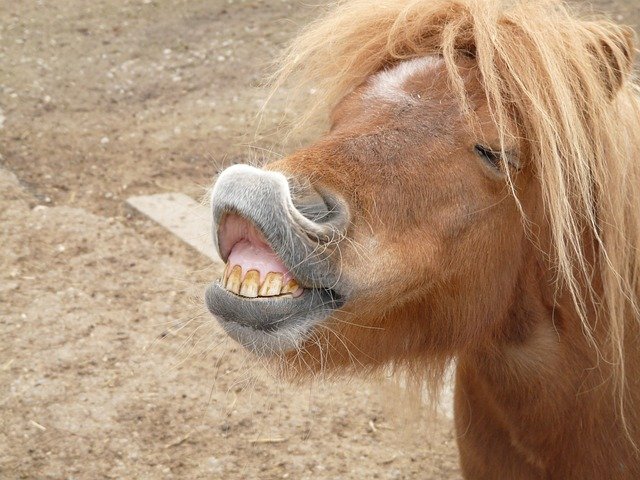
The emotion of happiness also has a lot to do with the state of being relaxed or comfortable, given that horses came from a naturally stressed and predatory environment. When a horse can be comfortable, without the worry of a potential danger or stress, they start to display more playful and content characteristics. This is easily observed in the field, when your horse just gets to be a horse: frolicking, lounging, and running with his friends. This ideal of comfortability can be seen in training in the way that, as equestrians we are always trying to create a desirable and relaxed environment where our horses can thrive. If we build a space and relationship with trust and communication, our horses are more likely to yield to our commands. A common misconception is the assumption that when a horse licks or chews after a training sequence, that they are acting in a submissive and happy way. While it is true that this signifies that the wheels are turning within their brains, the emotion being displayed is quite the opposite. This response is rather an evolutionary transition from an acute stressor, the task, to the rest and relaxation period. In other words, your horse just took a deep breath and wiped the sweat off his forehead. Understanding misconceptions like this one helps us better realize how horses actually deal with stress.
The Stressed Horse
Although it is not a happy emotion, stress, fear and anxiety are among the easiest to read on a horse. As mentioned before, horses are a prey animal, which means that they always have an escape route in mind before danger is even sensed. Although it is true that some horses exhibit higher anxiety levels than others, there are several common body cues that can be used to distinguish a stressed horse.
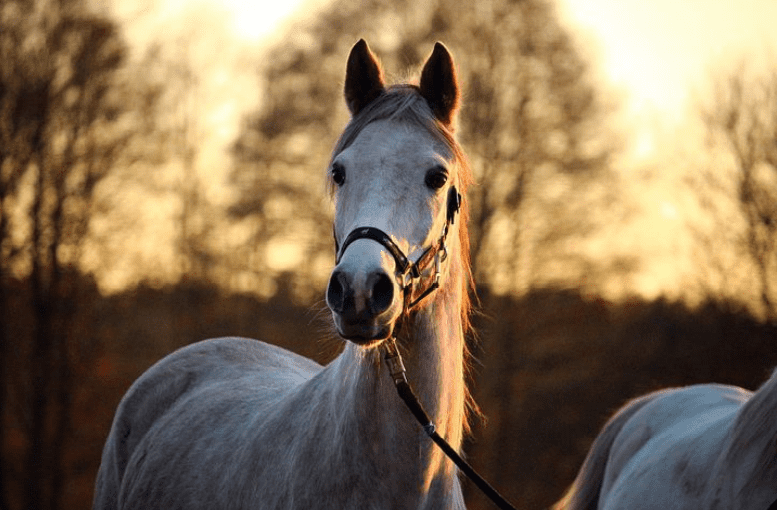
The first clue is that of a horse with both ears pointing directly forward or backwards with wide open eyes. This is most certainly a horse that has become excessively troubled by a noise or rattling nearby. Oftentimes you can see their eyes rapidly shaking back and forth, signifying anxiety as they try to calculate an escape route. For domesticated horses in stalls, this can become extremely dangerous as they discover that they have no foreseeable way out. Horses in this state are continuously weighing their options, practicing their innate “fight or flight” response.
Widened nostrils are another body cue that is commonly associated with the feeling of stress, fear or anxiety. When a horse finds themselves in a stressful situation, they begin to breathe with much heavier breaths in the effort to try and relieve their stress. This body cue can be caused by both environmental and physical or chronic stress. Widened nostrils are not normally a reaction that takes place independently from other cues, but are a good indicator of a potential stressor. Chronic stress is an accumulated stress that becomes worse over time as small and large taxing tasks begin to stack on top of each other. And while horses are no strangers to the wrath of chronic stress, it is a type of diagnosis that exists outside of body language. If you feel your horse remains in a continuous state of anxiety or fear, it is important to consider the physical, environmental, and mental aspects of their health. Chronic stress is much harder to read through body language and has much more to do with the entirety of the body at an external and internal perspective. Mood changes, weight loss, lethargic tendencies, and more are all indicators of a chronically stressed horse.
Chronic stress is much harder to read through body language and has much more to do with the entirety of the body at an external and internal perspective
The Sad Horse
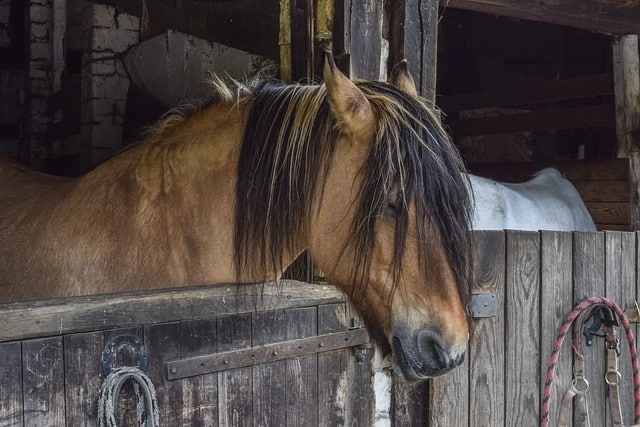
A Sad Horse It is hard to think of our horses as anything other than the happy and playful ponies we put out to pasture every day. Despite the constant hugs, grooms, and treats, horses are not without the occasional feeling of depression which is quite easily read through their body language. A sad or depressed horse is one that has become disconnected to the feeling of actually being a horse or has lost their battle to chronic stress. In other words, this horse has given up to the feeling of continual fear or anxiety, which is most commonly caused by domestication practices. This is a horse that exhibits low energy and one that remains in a fixed position. All their weight is distributed towards the front of their body with their head essentially on the floor, and their eyes and ears anemic in nature. In this state, horses tend to face a wall to position themselves away from the rest of the barn or herd, making them virtually unfazed by their surrounding environment. The case of the sad horse more often occurs in stabled horses, ones who have spent an exceeding amount of time out of their natural habitat. This phenomenon causes these horses to generate feelings of helplessness in a situation that they deem uncontrollable. The remedy to this occurrence is simple; let your horse be a horse. All it takes is a good pasture.
The Uncomfortable Horse
Remember that thing about horses being honest? Well, when it comes to their comfortability, they are without a doubt and in a word, brutally honest. Without any hesitation, any horse in a position of discomfort is going to use body language to let you know “Hey, that hurts”. The importance is pin-pointing these cues so that we can improve the overall work ethic of the horse-to-human team. The act of becoming uncomfortable for a horse is an occurrence that more often takes place at the grooming rail or in the training arena. A body cue that is often associated with discomfort is the swishing of the tail. Many times in the riding arena or round pen, trainers will see their horses maneuvering their tail during work. But what does it mean? If you think about horses in the pasture, when a fly lands on their side and bothers them, the horse will tend to switch their tail to rid themselves of the pest. In the case of riding, when you give them an undesirable squeeze of the leg, they are simply trying to rid themselves of that potentially painful pressure. While you don’t necessarily need to change your entire riding style for this one response, it is mutually beneficial to further examine where that discomfort may be stemmed from. The modern bit is designed in a way that perfectly fits within the bars of a horse’s mouth, sitting right in-between the canines and first molars. But when a bit is ill-fitted to a particular horse, it can cause considerable pain to their mouth, causing shaking of the head or even biting at the reins. While you might think that your horse is just being especially conniving that day, it has more to do with the bit sizing, than their attitude. In this case, it is crucial that you check your equipment to avoid any further harm to your horse or even you.
A “girthy” horse is common within the equine community, but there is more to their agitated attitude than the stereotypical lazy horse. More times than not, when a horse is grabbing or biting at you when girthing up, it is a sign of pain in the localized area. Due to the fact that the girth tightens around the horse’s stomach and abdominal area, the chance of ulceration is one with great intensity. So if you feel as though you have a “girthy” horse, it can be extremely beneficial to consult a vet for an ulcer diagnosis.
The Angry Horse
Before diving into this section, it is crucial to understand that an angry horse is first an uncomfortable one. As mentioned before, horses are honest, and therefore will always warn you before arriving in a state of anger that can cause dangerous tendencies. The key here is pay close attention to the cues of discomfort so that you can avoid the subsequent angry horse. One of the first things you are told as an equestrian is beware of the pinned ears. This is a scary yet effective body cue that immediately lets the rider know that it is time to back off.
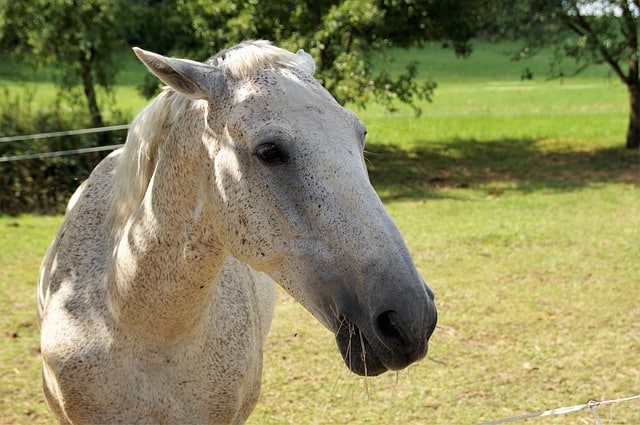
When a horse’s ears are pinned back, it signifies the ultimate level of discomfort, which more often than not leads to bucking and kicking. While this action is a scary one, it is one that is not without its prior warnings. Tail swishing, nipping at the girth, head shaking and more are all indicative warnings essentially saying; “Hey, I don’t like that, and if you don’t stop, things will get worse”.
Even though technicalities suggest that horses don’t have a real or written language, they do make great conversationalists. Whether it be in your training or as you have your daily vent to the horse next door, they are always intently listening and truthfully responding.
As I have said, horses never tell a lie, they are always honest, and have a whole lot to say; we just have to become better listeners.
This article was originally published in the February 2021 Issue of Irish Sport Horse Magazine.
